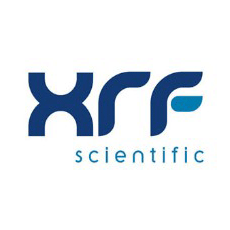The X-ray fluorescence process sees fluorescent X-rays emitted from a substance after this has been excited by X-rays or gamma rays. This process can be utilized as a non-harmful analytical procedure when investigating the material composition and chemistry of a sample.
X-ray fluorescence is an exceptionally versatile technique, highly suited to a wide range of applications involving analysis of a considerable number of materials across the periodic table.
How Does X-Ray Fluorescence Work?
X-ray fluorescence is reliant on the ionization process, whereby an atom will gain a positive or negative charge as it loses or gains electrons to create ions. Exposure to short wavelength X-ray beams and gamma rays can cause atoms inside a material to ionize.
Any energy variation between the initial X-ray beam and the fluorescent X-ray produced is captured and recorded. The fluorescent beam’s energy is directly linked to the element being analyzed.
X-ray fluorescence is commonly employed across a broad spectrum of applications, for example, material surface analysis, quality control processes, coating thickness measurements and thin film measurements.
Selecting X-Ray Flux Chemicals
X-ray flux chemicals are used in a wide range of applications, meaning that it is important to consider the application’s specific requirements before choosing to use a particular X-ray flux chemical.
Flux purity is an essential factor when X-ray flux chemicals are used in applications that require trace-level precision. Purity is also key in applications requiring minimal chances of contamination and reduced levels of background intensity.
Neutrality remains the best outcome for any mixture of X-ray flux chemical and sample. It is, therefore, crucial to note the basicity or acidity of a sample when selecting a flux, ensuring that this is as neutral as possible.
The physical structure of an X-ray flux chemical is a fundamental factor in its performance, with the most common structures being a powder, beaded, and granular. The format of a flux may also significantly impact the weighing accuracy, melting rates and hygroscopy of the fusion process. The use of pre-fused X-ray flux chemicals is generally the most effective means of ensuring successful fusion.
X-Ray Flux Chemicals from XRF Scientific
XRF Scientific offers an array of X-ray flux chemicals tailored to meet customer specifications. The company has also developed a range of standard fluxes which offer high precision results when used in nickel, copper and iron ore analysis.
Employing these standards removes the need to carry out high temperature loss of ignition, therefore offering significant time and cost benefits.
XRF Scientific offers X-ray flux chemicals such as lithium tetraborate and lithium metaborate products in a range of compositions. Lithium metaborate 100% is an ideal option for wet chemistry applications because of its melting point of 845°C. It also offers a high rate of reactivity with acidic samples.
Lithium tetraborate 100% flux may be used with copper sulfate, calcium oxide and magnesium oxide samples. This X-ray flux is also suitable for use with larger amounts of oxide samples or samples that include large quantities of limestone.

This information has been sourced, reviewed and adapted from materials provided by XRF Scientific.
For more information on this source, please visit XRF Scientific.